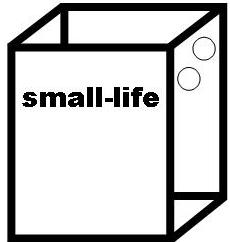 |
Stick
insects are living creatures and should be looked after properly. They do best in a cage which is tall and airy (with two mesh sides). Stick insects eat bramble/blackberry leaves. Stick insects like company and should be kept in small groups instead of on their own. Choose your stick insect species with care- always select a harmless species rather than a dangerous one. All the stick insects supplied by Small-Life Supplies are harmless and safe to handle. |
||
| housing The ELC cage is great for keeping stick insects. It is tall and airy. You can easily see the stick insects through the clear plastic panels. You can get into the cage by lifting off the lid and then sliding up one of the mesh sides. The ELC cage can house up to twenty Indian stick insects, or up to six Thailand stick insects or up to six New Guinea stick insects. You can mix different types of stick insect in the same cage. Dimensions: Height 51cm, 20", Width 36.5cm, 14½", Depth 27.5cm, 10¾" The ELC cage is supplied ready assembled. It is manufactured in the UK and made from strong plastic. |
ELC cage with Thailand stick insect adults |
|
| feeding Many stick insects eat bramble (blackberry) leaves. These leaves can be found all year in areas sheltered by long grass, for example woods, disused railway lines, and canal towpaths. Place the cut stems into a Sprig Pot of water. Mist the leaves every few days with cold tap water. Avoid wetting the stick insects. Some stick insects (for example the New Guinea and the Sabah varieties) need to drink more water and so provide a shallow Water Dish for them. |
Sprig Pot |
|
Water Dish |
||
| cleaning Stick insects should be kept in clean surroundings and so every week, replace the Liner at the bottom of the cage with a fresh one. Avoid using "substrates" such as vermiculite, earth, sand or bark chippings because these trap the eggs of the stick insects and the small granules can clog up the sticky pads on the stick insects' feet. Adult stick insects lay a few eggs every day and so it is essential not to save too many because you may then have too many baby stick insects to cope with. In the wild stick insects lay so many eggs because most are destroyed by water or eaten. You can mimic nature by tipping the contents of the Liner into a bowl and pouring water on top. Hot water acts the fastest and will stop the eggs from developing. Put the eggs that you do save into a HAP and wait for them to hatch a few months later (the incubation time depends on the species). |
ELC Liners |
|
This Care Sheet is produced by Small-Life Supplies to generate more interest in the hobby and is copyright free. Please print this sheet if you need more copies.
| Small-Life
Supplies |
Stick
insect cages and enclosures |
Living
stick insects ready now |
Clearance & sale items |
Knowledge Base |
Lab Insect rearing cages |
About Us |
FAQs |
Reviews |